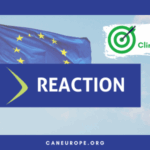BLOG POST
The EU’s statistical office of the European Union Eurostat just published its statistics on the share of renewable energy sources in the electricity, heating & cooling and transport sector in 2020. With a 22.1% share of energy consumed from renewable sources in 2020, the EU has reached its headline target of 20 % for that year. Most Member States reached their national 2020 target as well. However, everyone knows what 2020 is famous for. The exceptional circumstances and disruptions in all economic sectors due to the COVID-19pandemic have been easing to meet the renewable energy target, as it has contributed to lowering the overall energy consumption. There is no time to celebrate. The COVID-related impacts will likely have a short lifespan and there is a need for structural changes for an energy transition based on 100 % renewables.
Ambition and pace towards 2030 should increase
Even if the EU has reached its 2020 target, it feels like winning a race that one runs against children 5 years younger. We can’t accept these tricks having such serious challenges ahead of us. If we are to reach the Paris Agreement’s objective to limit temperature rise to 1.5°C, then a sharp increase of renewable energy capacities is indispensable. Nor the current EU renewable energy target of 32% by 2030, nor the newly proposed target of 40% by 2030 (currently being discussed as part of the revision of the EU’s Renewable Energy Directive, RED) will do the job. This decade will be decisive in reaching the 1.5°C objective, therefore the EU should set a renewable energy target of at least 50% by 2030.
Higher ambition can only be met if we speed up the deployment of renewables. Therefore, Member States need to improve their regulatory framework and support a higher uptake of renewables in all sectors.
Reintroduction of national binding targets need to be reconsidered
The 20% EU renewable energy by 2020 target was allocated among the Member States through national binding renewable energy targets. The national targets reflected not only a clear allocation, but also the specific progress in mobilising renewable energy potential. That changed however with the 2018 revision of the RED. The 2030 EU renewable energy target of 32%, that was introduced then, was made binding only at EU level without binding targets for the individual Member States -a clear setback. Member States had to specify national 2030 renewable energy contributions in their National Energy & Climate Plans (NECPs), according to the Energy Union Governance Regulation. Even though the national contributions indicated in the NECPs could be sufficient to slightly surpass the current 2030 EU renewable energy target of 32% as indicated by the European Commission’s analysis in September 2020, clearly there are weaknesses with the current governance system. One of them is that the current system lacks strong enough tools in case Member States fail to deliver.
Such uncertainties undermine the investment security in renewable energy. Given the importance of capital costs for renewable energy, clear and binding national targets and trajectories are needed to ensure predictability and certainty. Otherwise, investors might face risk surcharges when borrowing money for renewable energy projects. Not having binding targets sends the wrong signal. Unfortunately, the current proposal of the RED revision did not reintroduce national binding targets. In view of the climate emergency we are in, reliability of national renewable energy policies is needed more than ever.
Unprecedented deployment pace of wind and solar is required
In 2020, 37.5% of the EU’s electricity was generated by renewables, half of it by solar and wind. Solar was the fastest-growing energy source. Yet, renewable electricity generation needs to increase five-fold from 2020 to 2040 for a fully renewable energy system. Specifically for solar and wind energies, this means at least quadrupling the capacities that are installed every year in the EU compared to the past decade, in order for the EU to stick to its commitments under the Paris Climate Agreement.
Despite improvements made through the previous revision of the RED , it is clear that there are still too many complex and long administrative procedures that remain a barrier for increased and faster deployment of renewable energy. Further clarity to the overarching rules will be needed to ensure barriers at national level are being removed. These rules need to ensure the opportunity for citizens and communities to engage in the energy transition. At the same time, the climate and biodiversity crisis are strongly interlinked. Increased renewable energy deployment must be managed with full respect for biodiversity and compliance with associated legislation. All eyes are now on the next 10 year period. The EU must enhance its renewable energy objectives for 2030 and Member States must accelerate deployment at national level if we are to achieve the climate targets.



